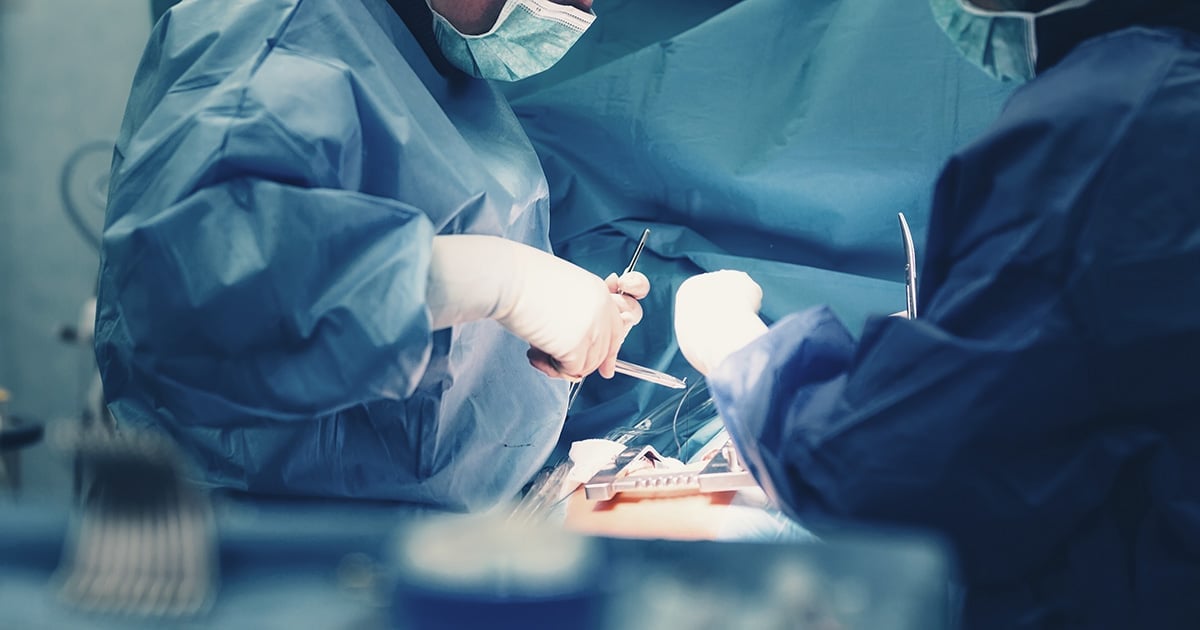Minimally Invasive Surgery for Aortic Aneurysm, reducing the risk and hospital length of stay

Each year in the United States, aortic aneurysm rupture causes 15,000 deaths where 90-95% of patients die before reaching a hospital because of massive blood loss.
There are 2 types of aortic aneurysms: abdominal and thoracic. According to Dr. Attapoom Susupaus, cardiac cardiothoracic surgeon at Bangkok Heart Hospital, Surgical repair should be performed as expeditiously as possible for both types of aortic aneurysm.
Old age, diabetes mellitus, hypertension, and cigarette smoking are known risk factors for aortic aneurysm. These medical problems can lead to a weak aortic wall that bulges outward called aortic aneurysm. Just like a balloon, the aneurysm enlarges, stretching the walls of the artery making it thinner which compromises the artery wall’s ability to stretch any further. At this point, an aneurysm is at risk of rupturing and causing potential fatal bleeding.
Mortality rate of ruptured thoracic aortic aneurysm is 95%. This reduces to 90% if the aneurysm is in the abdomen. If there are 100 patients with ruptured aortic aneurysm, 90 patients will die before arriving at a hospital. 10 patients will reach a hospital alive and only 5 patients will survive.
Usually an aortic aneurysm surgery is complicated, as most patients are high risk surgical candidates. As the aortic wall is not only weakened at one point but all over the body, other organs might also be at risk. There are risks of renal failure, liver failure, and ischemic stroke due to hypotension.

Treatment
There are two primary methods of aortic aneurysm repair.
- Open repair : The traditional treatment for aneurysms is a surgery to replace the diseased blood vessel with an artificial blood vessel. In the conventional open operation a large incision is made in the thoracic or the abdomen. The blood vessels above and below the aneurysm are clamped in order to control any bleeding. A surgeon needs to work quickly and carefully in order to avoid ischemic complications especially during thoracic aortic aneurysm open repair. The larger the aneurysm, the greater the chances that complications may occur.
- Endovascular Aneurysm Repair (EVAR) : Two small vertical cuts are made in the groin and an artificial graft is delivered to and deployed from inside the aneurysm itself. This less invasive procedure is a new technique that is suitable for high risk patients. Endovascular repair of aneurysms does not require a large incision and has a substantially shorter recovery period than the conventional open surgical approach. After the surgery, the patient needs to do yearly follow ups to make sure that the graft is in the right position and working properly.
Endovascular procedures aim to reduce the morbidity and mortality of treating aortic aneurysm in patient population over the age of 60 and who has comorbidities such as diabetes, hypertension, heart disease, and history of abdominal or thoracic surgery.
“The endovascular aneurysm repair requires much smaller incisions and is also associated with reduced complications. In addition it provides better chances of survival for older population with comorbidities. The complication after aortic aneurysm surgery includes pneumonia, infection, and pain. The recovery time for endovascular aneurysm repair is around 5-7 days. On the other hand, patients who undergo an open repair might have to spend around 2 weeks in a hospital.”
The treatment decision depends on the physical condition of the patient in addition to the location, shape, size of an aneurysm. A doctor will evaluate and plan for a suitable treatment option, as an aneurysm repair surgery requires a multidisciplinary team approach and a well-equipped surgical facility.
At Bangkok Heart Hospital, a team of specialists who are experts in heart care is available 24 hours a day. Our facility includes a hybrid operating room that meets all of the standard features of both an operating room and a cardiac catheterization facility. A Flexmove-Heart Navigator allows a surgeon to have a full view of the heart. In addition, a fluid management system provides rapid administration of fluid to replace blood loss. These significantly reduce after surgery complications.

